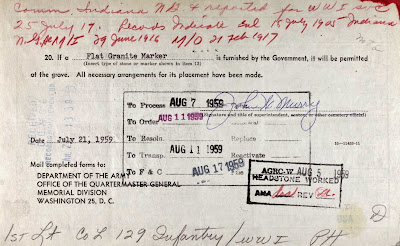In my box of "mystery photos" was this darling portrait of a beribboned teenaged girl and her younger brother in a sailor suit. The photo folder had a Hungarian inscription naming the two Waldman children with a date from 1918. Below it, in my mother's handwriting, were the names in English.
The photography studio where these children posed was located in the Bronx, not far from where my Hungarian grandparents (Tivadar
Schwartz and Hermina
Farkas Schwartz) and great-grandparents (Moritz
Farkas and Lena Kunstler Farkas) lived.
This photo was in my mother's possession for decades, so I originally believed the Waldmans were family friends. Now I think they were actually cousins.
It all started when I tracked this girl's name through Census records and newspaper clippings and located her daughter. We confirmed that this photo showed her mother and uncle. I mailed her the photo -- because it belongs in her line -- and I continued the research.
On
Jewish Gen, I connected with a family researcher also interested in
Eperjes (now Presov), the Hungarian town where the Waldman children were born. He very kindly sent me downloads of vital records from that town.
One excerpt, shown above, included the little boy's birth and a bit about the parents. Jozsef
Waldman was an electrician born in
Eperjes and Julia
Farkas was born in
Tiszaujlak (located at M26, the start of the two arrows on the map below).
Tiszaujlak (below) was in Marmaros county, Hungary, then became part of Czechoslovakia when the map changed, and finally part of the USSR and then Ukraine, since 1991.
My Farkas family has roots in
Berehi and my Schwartz family has roots in
Uzhorod [aka the market town of
Ungvar], shown at top left corner of the map. Very intriguing geographical connections.
The 1920 US Census shows a teenaged nephew living with electrician Joseph & Julia & their 2 children in Jersey City, NJ: His name was "Emery Swartch" (probably "Imre
Schwartz") and he was an electrician's apprentice. Very intriguing surname coincidence connecting Imre with my Schwartz side. Of course the Census doesn't ask whose nephew Imre is, so I can't tell whether he's related to Joseph or Julia--whether he's from the Waldman side or the Farkas side.
So far, I haven't found Julia Farkas's marriage info or her parents' names. Was she from my Farkas side or my Schwartz side? Stay tuned!
 When Bessie Hostetler was married in Millersburg, IN at high noon on May 31, 1906 to Homer John Kelsey, the Hostetler and Shank families had reason to rejoice.
When Bessie Hostetler was married in Millersburg, IN at high noon on May 31, 1906 to Homer John Kelsey, the Hostetler and Shank families had reason to rejoice.















